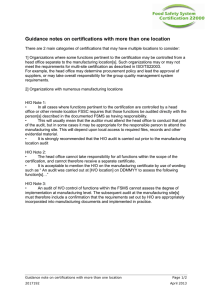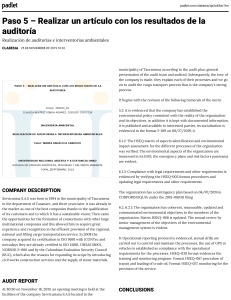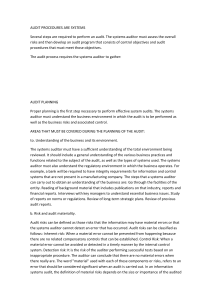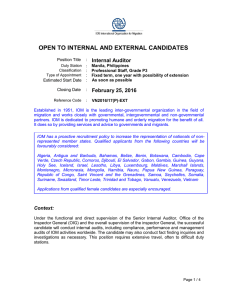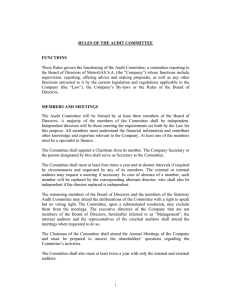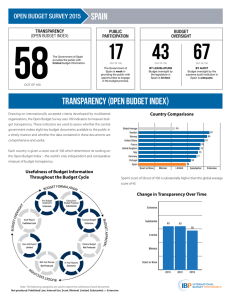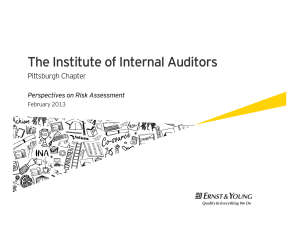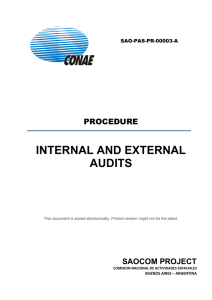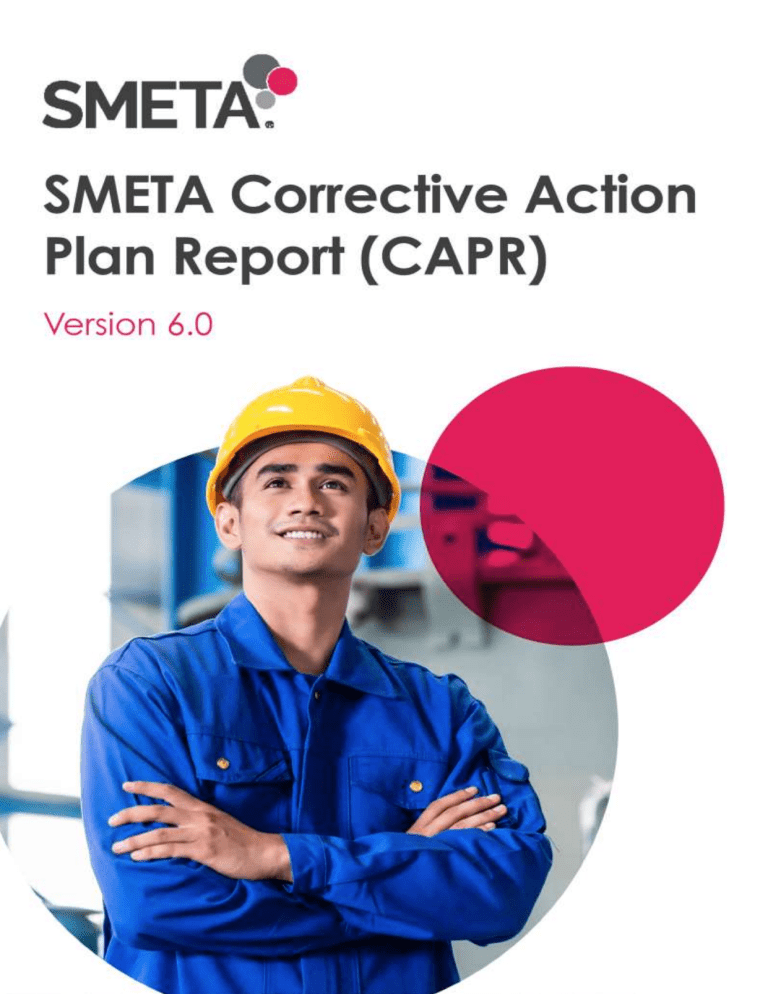
Audit Details Sedex Company Reference: ZC: Sedex Site Reference: (only available on Sedex System) (only available on Sedex System) ZS: Business name (Company name): Site name: Site address: Country: (Please include full address) Site contact and job title: Site phone: SMETA Audit Type: Site e–mail: Labour Standards Health & Safety Environment Business Ethics Date of Audit: Report Owner (payee): Audit Company Name & Logo: (If paid for by the customer of the site please remove for Sedex upload) Audit Conducted By Commercial Purchaser Retailer Brand owner Multi– stakeholder NGO Trade Union Combined Audit (select all that apply) Audit company: Audit company Report reference: Report reference Date: DD/MM/YY 2 Audit company: Audit company Report reference: Report reference Date: DD/MM/YY 3 SMETA Declaration I declare that the audit underpinning the following report was conducted in accordance with SMETA Best Practice Guidance and SMETA Measurement Criteria. (1) Where appropriate non-compliances were raised against the ETI code / SMETA Additions & local law and recorded as non-compliances on both the audit report, CAPR and on Sedex. (2) Any Non-Compliance against customer code alone shall not be uploaded to Sedex. However, in the CAPR these ‘Variances in compliance between ETI code / SMETA Additions/ local law and customer code’ shall be noted in the observations section of the CAPR. Any exceptions to this must be recorded here (e.g. different sample size): Auditor Team (s) (please list all including all interviewers): Lead auditor: Team auditor: Interviewers: Report writer: Report reviewer: Date of declaration: Note: The focus of this ethical audit is on the ETI Base Code and local law. The additional elements will not be audited in such depth or scope, but the audit process will still highlight any specific issues. This report provides a summary of the findings and other applicable information found/gathered during the social audit conducted on the above date only and does not officially confirm or certify compliance with any legal regulations or industry standards. The social audit process requires that information be gathered and considered from records review, worker interviews, management interviews and visual observation. More information is gathered during the social audit process than is provided here. The audit process is a sampling exercise only and does not guarantee that the audited site prior, during or post–audit, are in full compliance with the Code being audited against. The provisions of this Code constitute minimum and not maximum standards and this Code should not be used to prevent companies from exceeding these standards. Companies applying this Code are expected to comply with national and other applicable laws and where the provisions of law and this Code address the same subject, to apply that provision which affords the greater protection. The ownership of this report remains with the party who has paid for the audit. Release permission must be provided by the owner prior to release to any third parties. Audit company: Audit company Report reference: Report reference Date: DD/MM/YY 4 Audit Parameters Audit Parameters A: Time in and time out Day 1 Time in: Day 1 Time out: Day 2 Time in: Day 2 Time out: Day 3 Time in: Day 3 Time out: B: Number of Auditor Days Used: C: Audit type: Full Initial Periodic Full Follow–up Partial Follow–Up Partial Other – Define D: Was the audit announced? Announced Semi – announced: Window detail: Unannounced weeks E: Was the Sedex SAQ available for review? Yes No If No, why not F: Any conflicting information SAQ/Pre-Audit Info to Audit findings? Yes No If Yes, please capture detail in appropriate audit by clause G: Who signed and agreed CAPR (Name and job title) H: Is further information available (if Y please contact audit company for details) Yes No I: Previous audit date: J: Previous audit type: K: Was any previous audit reviewed during this audit Yes No N/A Audit attendance Management Worker Representatives Senior management Worker Committee representatives Union representatives A: Present at the opening meeting? Yes No Yes No Yes No B: Present at the audit? Yes No Yes No Yes No Audit company: Audit company Report reference: Report reference Date: DD/MM/YY 5 C: Present at the closing meeting? Yes No Yes No Yes No D: If Worker Representatives were not present please explain reasons why (only complete if no worker reps present) E: If Union Representatives were not present please explain reasons why: (only complete if no union reps present) Guidance: The Corrective Action Plan Report summarises the site audit findings and a corrective, and preventative action plan that both the auditor and the site manager believe is reasonable to ensure conformity with the ETI Base Code, Local Laws and additional audited requirements. After the initial audit, the form is used to rerecord actions taken and to categorise the status of the non-compliances. N.B. observations and good practice examples should be pointed out at the closing meeting as well as discussing non-compliances and corrective actions. To ensure that good practice examples are highlighted to the supplier and to give a more ‘balanced’ audit a section to record these has been provided on the CAPR document (see following pages) which will remain with the supplier. They will be further confirmed on receipt of the audit report. Root cause (see column 4) Note: it is not mandatory to complete this column at this time. Root cause refers to the specific procedure or lack of procedure which caused the issue to arise. Before a corrective action can sustainably rectify the situation it is important to find out the real cause of the noncompliance and whether a system change is necessary to ensure the issue will not arise again in the future. See SMETA BPG Chapter 7 ‘Audit Execution’ for more explanation of “root cause’’. Next Steps: 1. The site shall request, via Sedex, that the audit body upload the audit report, non-compliances, observations and good examples. If you have not already received instructions on how to do this then please visit the web site www.sedexglobal.com. 2. Sites shall action its non-compliances and document its progress via Sedex. 3. Once the site has effectively progressed through its actions then it shall request via Sedex that the audit body verify its actions. Please visit www.sedexglobal.com web site for information on how to do this. 4. The audit body shall verify corrective actions taken by the site by either a "Desk-Top” review process via Sedex or by Follow-up Audit (see point 5). 5. Some non-compliances that cannot be closed off by “Desk-Top” review may need to be closed off via a “1 Day Follow Up Audit” charged at normal fee rates. If this is the case then the site will be notified after its submission of documentary evidence relating to that non-compliance. Any followup audit must take place within twelve months of the initial audit and the information from the initial audit must be available for sign off of corrective action. 6. For changes to wages and hours to be correctly verified it will normally require a follow up site visit. Auditors will generally require to see a minimum of two months wages and hours records, showing new rates in order to confirm changes (note some clients may ask for a longer period, if in doubt please check with the client). Audit company: Audit company Report reference: Report reference Date: DD/MM/YY 6 Corrective Action Plan Corrective Action Plan – non-compliances NonCompliance Number The reference number of the noncompliance from the Audit Report, for example, Discrimination No.7 New or Carried Over Details of NonCompliance Is this a new noncompliance identified at the follow-up or one carried over (C) that is still outstanding Details of Non-Compliance Root cause (completed by the site) Preventative and Corrective Actions Details of actions to be taken to clear noncompliance, and the system change to prevent reoccurrence (agreed between site and auditor) Timescale (Immediate, 30, 60, 90,180,365) Verification Method Desktop / Follow-Up [D/F] Note if management agree to the noncompliance, and document name of responsible person Training Systems Costs lack of workers Other – please give details: Training Systems Costs lack of workers Other – please give details: Training Systems Costs lack of workers Other – please give details: Audit company: Audit company Report reference: Report reference Date: DD/MM/YY Agreed by Management and Name of Responsible Person: 7 Verification Evidence and Comments Details on corrective action evidence Status Open/Closed or comment Training Systems Costs lack of workers Other – please give details: Training Systems Costs lack of workers Other – please give details: Training Systems Costs lack of workers Other – please give details: Training Systems Costs lack of workers Other – please give details: Training Systems Costs lack of workers Other – please give details: Training Systems Audit company: Audit company Report reference: Report reference Date: DD/MM/YY 8 Costs lack of workers Other – please give details: Training Systems Costs lack of workers Other – please give details: Corrective Action Plan – Observations Observation Number New or Carried Over The reference number of the observation from the Audit Report, for example, Discrimination No.7 Is this a new observation identified at the follow-up or one carried over (C) that is still outstanding Details of Observation Root cause Details of Observation (completed by the site) Audit company: Audit company Report reference: Report reference Date: DD/MM/YY 9 Any improvement actions discussed (Not uploaded on to SEDEX) Good examples Good example Number Details of good example noted Any relevant Evidence and Comments The reference number of the non-compliance from the Audit Report, for example, Discrimination No.7 Audit company: Audit company Report reference: Report reference Date: DD/MM/YY 10 Confirmation Please sign this document confirming that the above findings have been discussed with and understood by you: (site management) If actual signatures are not possible in electronic versions, please state the name of the signatory in applicable boxes, as indicating the signature. A: Site Representative Signature: Title Date B: Auditor Signature: Title Date C: Please indicate below if you, the site management, dispute any of the findings. No need to complete D-E, if no disputes. D: I dispute the following numbered non-compliances: E: Signed: (If any entry in box D, please complete a signature on this line) Title Date F: Any other site Comments: Audit company: Audit company Report reference: Report reference Date: DD/MM/YY 11 Guidance on Root Cause Explanation of the Root Cause Column If a non-compliance is to be rectified by a corrective action which will also prevent the noncompliance re-occurring, it is necessary to consider whether a system change is required. Understanding the root cause of the non-compliance is essential if a site is to prevent the issue reoccurring. The root cause refers to the specific activity/ procedure or lack of activity /procedure which caused the non-compliance to arise. Before a corrective action can rectify the situation it is important to find out the real cause of the non-compliance and whether a system change is necessary to ensure the issue will not arise again in the future. Since this is a new addition, it is not a mandatory requirement to complete this column at this time. We hope to encourage auditors and sites to think about Root Causes and where they are able to agree, this column may be used to describe their discussion. Some examples of finding a “root cause“ Example 1 Where excessive hours have been noted the real reason for these needs to be understood, whether due to production planning, bottle necks in the operation, insufficient training of operators, delays in receiving trims, etc. Example 2 A non-compliance may be found where workers are not using PPE that has been provided to them. This could be the result of insufficient training for workers to understand the need for its use; a lack of follow-up by supervisors aligned to a proper set of factory rules or the fact that workers feel their productivity (and thus potential earnings) is affected by use of items such as metal gloves. Example 3 A site uses fines to control unacceptable behaviour of workers. International standards (and often local laws) may require that workers should not be fined for disciplinary reasons. It may be difficult to stop fines immediately as the site rules may have been in place for some time, but to prevent the non-compliance re- occurring it will be necessary to make a system change. The symptom is fines, but the root cause is a management system which may break the law. To prevent the problem re-occurring it will be necessary to make a system change for example the site could consider a system which rewards for good behaviour Only by understanding the underlying cause can effective corrective actions be taken to ensure continuous compliance. The site is encouraged to complete this section so as to indicate their understanding of the issues raised and the actions to be taken. Audit company: Audit company Report reference: Report reference Date: DD/MM/YY 12 For more information visit: Sedexglobal.com Your feedback on your experience of the SMETA audit you have observed is extremely valuable. It will help to make improvements to future versions. You can leave feedback by following the appropriate link to our questionnaire: Click here for Buyer (A) & Buyer/Supplier (A/B) members: http://www.surveymonkey.com/s.aspx?sm=riPsbE0PQ52ehCo3lnq5Iw_3d_3d Click here for Supplier (B) members: http://www.surveymonkey.com/s.aspx?sm=d3vYsCe48fre69DRgIY_2brg_3d_3d Audit company: Audit company Report reference: Report reference Date: DD/MM/YY 13

